Fibro Fix Blog
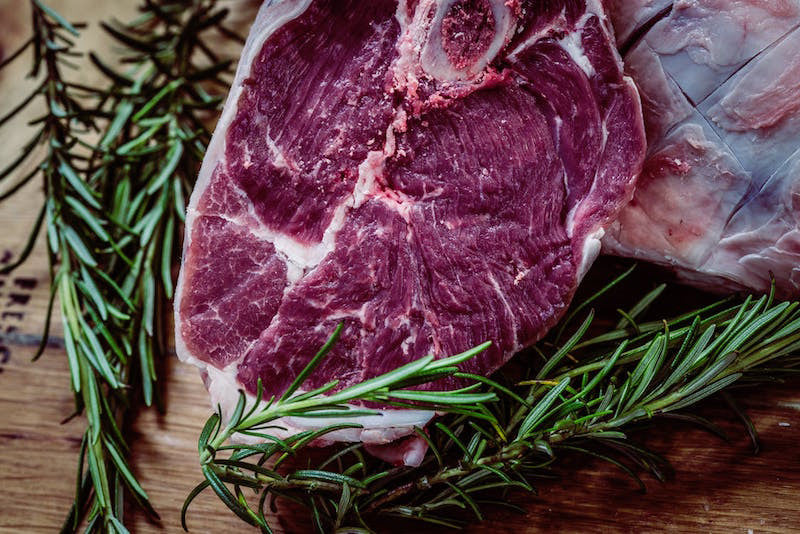
A TRANS FAT THAT’S GOOD FOR YOU? 0
If you follow health and nutrition news, no doubt you’ve heard of trans fats, and no doubt you know you generally want to stay away from them. Trans fats are created when oils that are normally liquid at room temperature (like soybean or canola oils) undergo complex chemical processing that results in them being solid or semi-solid, such as in margarines and vegetable shortening. You can recognize trans fats in ingredient lists by the words “partially hydrogenated.” Any oil that has been partially hydrogenated contains trans fats. And even if a food label claims it has “zero grams trans fat per serving,” it’s still important to read the ingredients list, because under the current U.S. labeling laws, manufacturers are permitted to claim a product has “zero” grams of something if it contains less than 0.5 grams per serving. So there are many processed foods that do contain trans fats, but the labels are deceptive, because the serving sizes are typically very small. (Meaning that when you eat a more reasonable portion, you could be ingesting several grams of trans fat without even knowing it.)
Trans fats are found in many common processed foods, including crackers, cookies, supermarket bakery cakes and quick breads, cake frosting, and peanut butter. They’re used in these products because the partially hydrogenated oils have a longer shelf life than the liquid oils they start out as, and also because they were intended to replace saturated fats, which are naturally solid at room temperature, but which for decades were believed to be linked to heart disease and obesity.
You can train your palate to recognize these fats because they have a different “mouthfeel” from the natural saturated fats. Margarine doesn’t melt in your mouth the same way real butter does; peanut butter that contains partially hydrogenated oils coats the roof of your mouth with a kind of “waxy” texture that is absent from peanut butter with no added oils.
And just as they don’t feel and taste the same as natural saturated fats, they don’t act the same way in your body. Decades of research have shown that consuming trans fats can have a detrimental effect on cardiovascular health by negatively influencing levels of LDL and HDL. Because of the way they interfere with normal cell signaling, they are also associated with poorer body composition and difficulty losing body fat.
With much recent research exonerating the saturated fats you were likely cautioned to limit for many years, you may see a move away from trans fats and a return to the use of more traditional fats, like butter and coconut oil, in processed foods. And this is a great thing, but let’s not throw the baby out with the bathwater. Not alltrans fats are to be avoided. In fact, there’s a natural trans fat that is associated with many positive health outcomes.
This good trans fat is called conjugated linoleic acid (CLA), and it’s found mostly in the fat and dairy products of ruminant animals (cows, goats, sheep, bison). CLA content is highest when these animals consume their natural diets—grass, silage, and hay—rather than the grains they’re fed in industrial feedlots. Feedlot animals still produce a little bit of CLA, but there’s much more in the fat from grass-fed animals.
CLA may help support body fat loss and maintenance of a healthy body composition. Some studies looking at CLA supplementation have shown it to be beneficial even without changes in diet and lifestyle, but in the absence of those modifications, CLA might help to an extent, but it won’t be a “magic bullet” for weight loss. It’s also been shown to promote a healthy inflammatory response and support normal cell signaling. Because of its role in contributing to proper cell function, it may also aid inhealthy insulin signaling.
With the near-disappearance of CLA from our modern food supply, and the potential positive impact CLA has on whole-body health, consider seeking out meat and dairy products from grass-fed and pastured animals. You can often find these from local producers at nearby farmers’ markets. If you don’t have access to these, consider supplementing with a high-quality CLA product.
- David Brady
- Tags: CLA dairy grass-fed health meat nutrition trans fat weight loss wellness and prevention
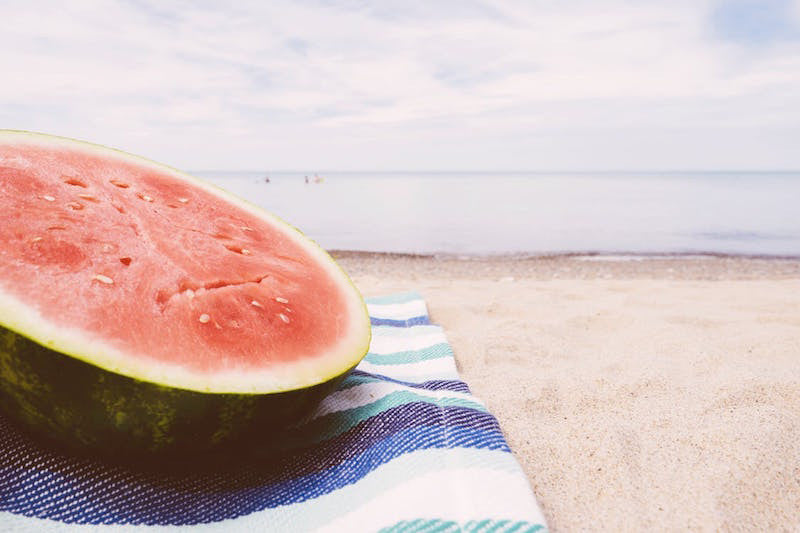
WATERMELON – A SUMMERTIME STAPLE 0
Summertime picnics and holiday celebrations would hardly be complete without watermelon. But this brightly colored perennial favorite fruit offers up more than a juicy, thirst-quenching snack in hot weather. Its potential health benefits give it a welcome place at the table.
It is well known that women’s risk for cardiovascular events increases after menopause. Compounds in watermelon may help to improve blood vessel elasticity in this susceptible population, possibly resulting in favorable effects on blood pressure. The effects of watermelon on cardiovascular health are likely due to the fruit’s relatively high content of citrulline, an amino acid that serves as a metabolic precursor to arginine. (In fact, citrulline was first isolated from watermelon, and the compound takes its name from the plant’s botanical name, Citrullus lanatus.) Arginine is a key factor in the production of nitric oxide, which is a vasodilator—meaning, it helps relax the blood vessels, which may allow blood to flow more smoothly. Studies in post-menopausal women and obese adults with hypertension and pre-hypertension have shown that compounds extracted from watermelon help to moderately lower blood pressure. Because of the way the body metabolizes arginine, consuming foods rich in citrulline may be an even more effective way to raise arginine levels in the body than by consuming arginine directly.
The benefits of watermelon compounds on the cardiovascular system make watermelon a nice addition to post-workout recovery for athletes. Fresh as well as pasteurized watermelon juice were shown to have helpful effects on muscle soreness in healthy young men 24 hours after a maximum effort test on a bicycle ergometer.
Watermelon is good source of the antioxidant lycopene, also found in other red/pink fruits and vegetables, such as tomatoes and guava. In a study of healthy adults, supplementation with watermelon juice resulted in significant increases to plasma lycopene, compared to no supplementation. It’s a nice coincidence that watermelon—a summertime staple—is so rich in lycopene since lycopene may be protective against UV-induced photo-damage to the skin. In other words, to a certain degree, watermelon might be nature’s sunscreen!
A cup of watermelon (152g) provides 21% of the daily value (DV) for vitamin C, and 17% of the DV for vitamin A (as beta-carotene). The natural sweetness of watermelon might make those concerned about their sugar intake refrain from this delicious summer treat. However, a one-cup serving of watermelon has just 11g of carbohydrate. Compare that to a large bagel, weighing 131g (less than the watermelon), which delivers a whopping 70g of carbohydrate. Moreover, while the glycemic index of watermelon is relatively high, the glycemic load is quite low. After all, it’s not called watermelon for nothing: of the 152g by weight, 139g are water!
The peppery bite of bitter greens, such as arugula, and the saltiness of cubed feta cheese, make a classic salad to complement the sweetness of watermelon. And the bright pink flesh of a watermelon isn’t the only edible part. Nose-to-tail cooking doesn’t apply just to animal foods; you can use all parts of a watermelon in culinary applications. You can certainly compost the rind and seeds, but there are other ways to put these underappreciated parts to use. Pickled watermelon rind is a great way to use something that is typically discarded. In fact, the rind contains even more citrulline than the pink flesh, and more of other helpful phytochemicals as well.
And don’t forget about the seeds! Watermelon seeds are good for more than spitting out onto the grass at family picnics. Although we don’t typically think of eating them, they’re a good source of natural fats, and they’re high in magnesium, phosphorus, zinc, and manganese.
Consider these recipes for new ways to enjoy watermelon:
- Arugula, Watermelon and Feta Salad
- Watermelon and Tomato Gazpacho
- Watermelon Coconut Cooler
- Watermelon Salad with Tomatoes, Goat Cheese and Basil
And a couple for the rind (feel free to use less sugar, or better yet, use xylitol instead):
Sources
- Figueroa A, Wong A, Hooshmand S, Sanchez-Gonzalez MA. Effects of watermelon supplementation on arterial stiffness and wave reflection amplitude in postmenopausal women. Menopause. 2013 May;20(5):573-7.
- Edwards AJ et al. Consumption of watermelon juice increases plasma concentrations of lycopene and beta-carotene in humans. J Nutr. 2003 Apr;133(4):1043-50.
- Tarazona-Díaz MP, Alacid F, Carrasco M, Martínez I, Aguayo E. Watermelon juice: potential functional drink for sore muscle relief in athletes. J Agric Food Chem. 2013 Aug 7;61(31):7522-8.
- Tarazona-Díaz MP, Viegas J, Moldao-Martins M, Aguayo E. Bioactive compounds from flesh and by-product of fresh-cut watermelon cultivars. J Sci Food Agric. 2011 Mar 30;91(5):805-12.
- Boris Revsin
- Tags: Arginine athletes cardiovascular health lycopene nutrition summer watermelon Watermelon seeds wellness and prevention workout
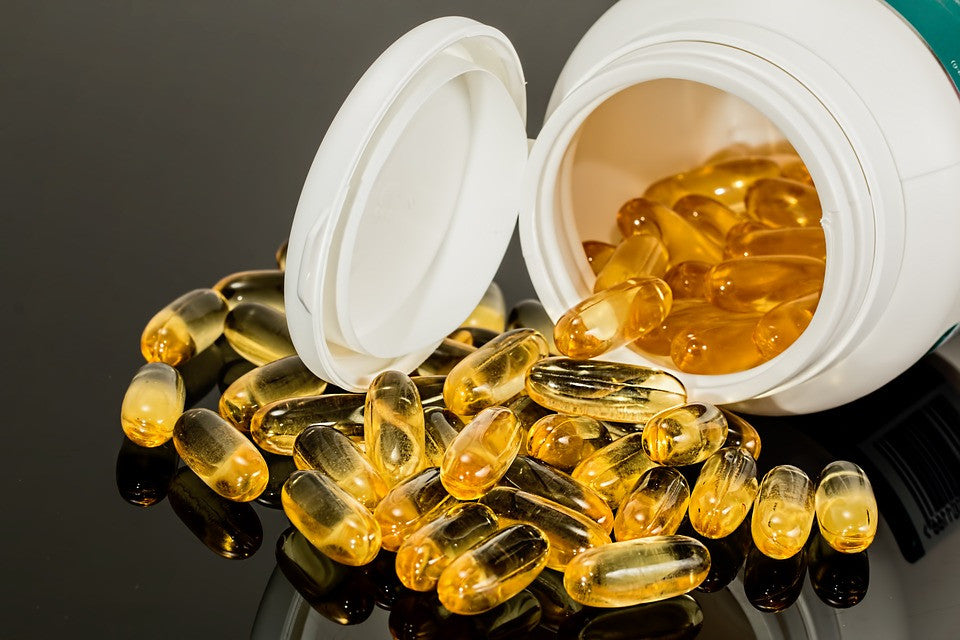
CoQ10 & Exercise - What You Need to Know 0
Find yourself laying on the couch with an ice pack or heating pad after an intense workout?
Feel like a heavy lifting session leaves you so sore you’re out of commission for days?
Maybe you’ve lost some pep in your step, and can’t seem to muster the energy to participate in your favorite physical activities as often as you’d like.
Appropriately scaling the frequency and intensity of exercise is the place to start, but there are nutritional supplements that might offer some benefit when it comes to energy levels, athletic performance, and recovery from exercise. One such nutrient is coenzyme Q10, usually just called CoQ10.
Another name for CoQ10—ubiquinone—gives us an idea of just how important a compound it is, and how commonly it’s found in living organisms. It is “ubiquitous,” since it’s found in almost all cell membranes and many other structural components of the body. CoQ10 is a fat-soluble compound synthesized inside the body through the same biochemical pathway used for the internal production of cholesterol. Since the body can make CoQ10, it’s not an “essential” nutrient, but, as is the case with many vitamins and minerals, supplemental amounts can be beneficial for giving the body a leg up when it comes to performing certain tasks.
Dietary sources highest in CoQ10 are animal proteins (beef, poultry, and fish), with smaller amounts occurring in nuts and seeds, and even smaller amounts found in some vegetables and fruits. Among animal sources of CoQ10, the richest concentrations occur in hardworking tissue, such as heart, liver, and kidney. (Maybe eat some offal now and then! Offal isn’t awful; it’s extremely nutritious!)
The most well-known function of CoQ10 is as a required element for energy production at a cellular level. Inside almost all of your cells (except red blood cells and a few others), energy is produced in microscopic generators, known as mitochondria. Perhaps you remember the term “electron transport chain” from high school biology or a biochem class. The electron transport chain is how cellular energy is created, and CoQ10 is a vital component of the process.
Because of CoQ10’s role in generating energy, supplemental amounts might give athletes a slight performance edge. Studies that looked at both athletically untrained and well-trained individuals reported mixed results regarding the effect of CoQ10 on physical performance. Some studies showed an increase in exercise capacity and oxygen consumption, while others showed no benefit. Additional studies demonstrated CoQ10 as being beneficial for reducing subjective feelings of fatigue, which might help an athlete—or even a weekend warrior—work harder or longer at their chosen activity.
The place where CoQ10 seems to have a more powerful effect is in limiting the cellular damage caused by exercise, and therefore, possibly leading to better recovery. Of course, exercise is a good thing, and regular physical activity is absolutely part of a healthy lifestyle. But, don’t forget that it’s also stressful! It’s not stressful in the way that sitting in a traffic jam is. It’s stressful on a cellular level. Exercise causes microscopic tears and damage to muscle fibers. In fact, this is the whole point of exercise: induce a small amount damage, and it is in recovering from this low-level damage that the muscles actually become stronger.
However, too much of this microscopic injury, without the right nutrients to help limit it, can lead to muscle pain, inflammation, and to more serious health conditions that may result from long-term, unresolved oxidative stress in the body. The good news is, CoQ10 has been proven effective for significantly reducing oxidative stress and inflammation induced by strenuous exercise, and also for reducing markers of damage to muscle tissue.
Bottom line: if you’re currently a couch potato, CoQ10 isn’t going to turn you into an Olympic medalist. But, by decreasing the cellular damage caused by exercise, and reducing feelings of fatigue, it might help you engage more frequently in physical activities you enjoy, which may contribute to overall improved health.
View my recommended and trusted CoQ10 here.
Sources
- Diaz-Castro J et al. Coenzyme Q(10) supplementation ameliorates inflammatory signaling and oxidative stress associated with strenuous exercise. Eur J Nutr. 2012 Oct;51(7):791-9.
- Mizuno K et al. Antifatigue effects of coenzyme Q10 during physical fatigue. Nutrition. 2008 Apr;24(4):293-9.
- Rosenfeldt F, Hilton D, Pepe S, Krum H. Systematic review of effect of coenzyme Q10 in physical exercise, hypertension and heart failure. Biofactors. 2003;18(1-4):91-100.
- Dr. Brady
- Tags: benefits of CoQ10 CoQ10 CoQ10 and exercise Dr. Brady wellness and prevention
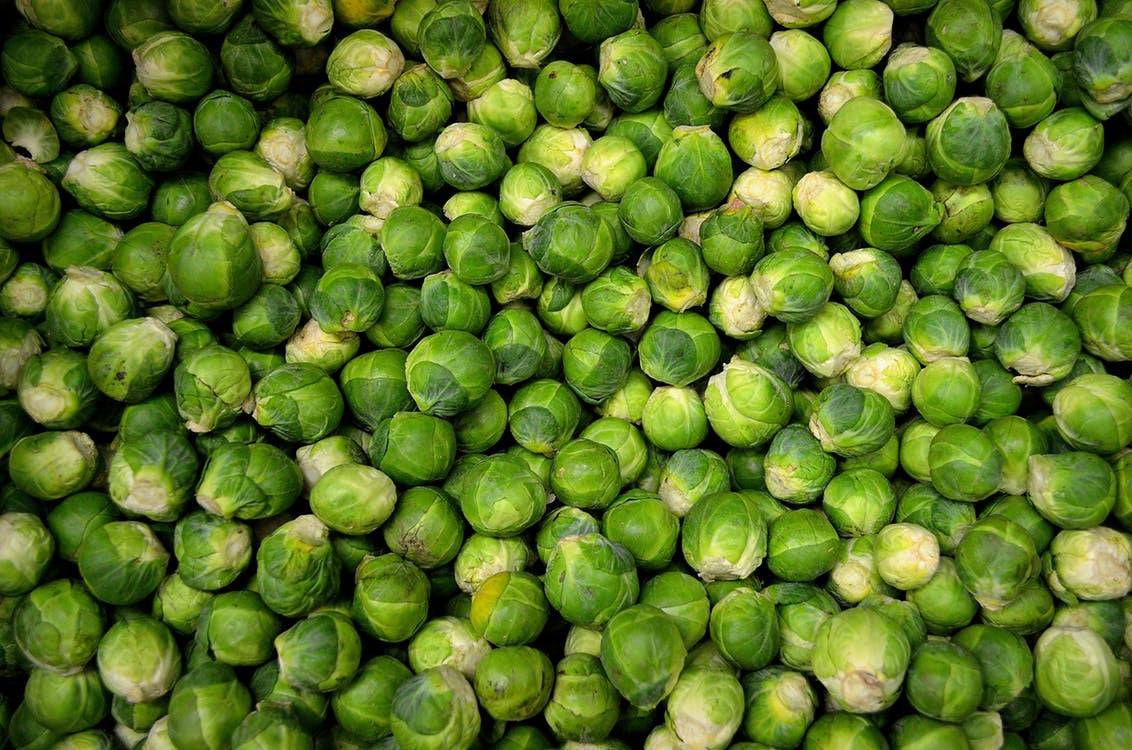
DIM: A Nutritionally Bright Idea 0
Perhaps our mothers knew more than they were letting on when they told us to eat our Brussels sprouts. Cruciferous vegetables—which include broccoli, cabbage, cauliflower, and kale—have long been favorites among doctors and nutritionists, and for good reason. Like other non-starchy vegetables, they are high in fiber and have a low glycemic load, meaning they have a minimal effect on blood sugar compared to starchier foods and grains. Cruciferous vegetables are a good source of vitamins and minerals (especially vitamin C, vitamin K and folate), and they contain sulfur, which is critical for supporting the liver during detoxification. Interestingly, this sulfur is also responsible for the unpleasant smell when these vegetables are overcooked.
But there’s something else that makes these foods one of the few categories all the different nutritional philosophies can agree on—including vegetarians, omnivores, low-carb followers, vegans and Paleo dieters. Cruciferous vegetables contain a compound called indole-3-carbinol, which our bodies metabolize upon digestion into diindolylmethane (DIM).
DIM is well-known for supporting healthy hormone levels in both men and women. In women, it favorably influences the ratios of estrogen metabolites while in men, it helps reduce the conversion of testosterone to estrogen, which can happen for a variety of reasons, including when excess body fat exists. (This can happen because our body fat produces an enzyme called aromatase, which can convert testosterone into estrogen.)
Because of the favorable effects DIM has on hormone levels that are associated with certain types of cancer, it has become a popular supplement in complementary and alternative medicine. Promising studies are showing that supplementation with this concentrated natural substance may also be helpful for supporting health when it comes to other issues not usually associated with imbalanced hormones.
When cells become damaged or reach the end of their lives, they are programmed to undergo a natural death, called apoptosis. Think of this like a self-destruct button for cells whose time has come. But sometimes, our cells lose their ability to undergo apoptosis, and instead, they continue to live, grow and reproduce. Supplementation with DIM has been shown to help “remind” damaged cells that they should engage in this self-destruct mode.
Remember the cell cycle from high school biology? In order for cells to reproduce and grow, they pass through a sequence of specific steps. New studies are showing that DIM may help inhibit unhealthy or damaged cells from completing the cell cycle.
While it is difficult to get enough DIM from consuming cruciferous vegetables alone, high-quality, effective DIM supplements are available and should be taken under the guidance of a qualified health care practitioner. However, the host of other benefits that come from foods like broccoli and kale mean that these vegetables should still make regular appearances on your dinner table. If all you remember about these are boiled, soggy, unappetizing foods your parents used to make you eat, think again. Cooked with a little creativity, these foods can make even the pickiest eaters go back for seconds. Here are some very tasty and very popular ways to make eating cruciferous vegetables delicious and enjoyable:
Roasted Broccoli with Garlic and Red Pepper
Balsamic Roasted Brussels Sprouts
Sources
Oncol Rep. 2012 May;27(5):1669-73. doi: 10.3892/or.2012.1662. Epub 2012 Jan 27.
Carcinogenesis. 2013 Aug;34(8):1815-21. doi: 10.1093/carcin/bgt122. Epub 2013 Apr 8.
- David Brady
- Tags: brussels sprouts nutrition DIM wellness and prevention
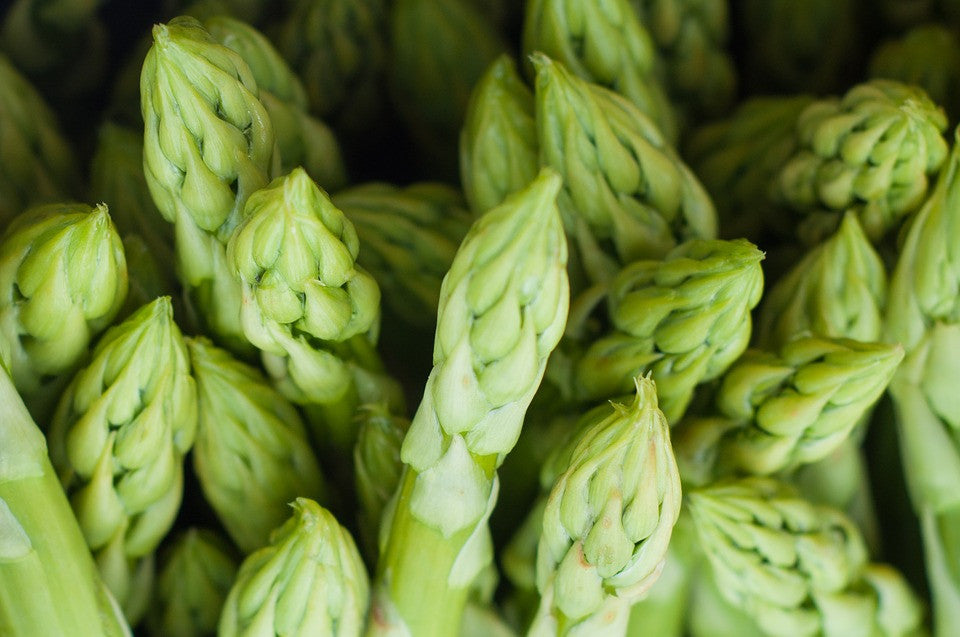
Please Pass the Asparagus 0
Tender stalks of asparagus peeking their heads through the soil and emerging after a long winter is a welcome sign of spring. Eaten raw as part of a vegetable crudité platter, or grilled with lemon juice and olive oil, asparagus is a delicious snack or addition to a meal. But this vegetable brings more than nice flavor to the table; it’s also no slouch when it comes to health benefits.
Like other green vegetables, asparagus is a good source of several nutrients, particularly folate and vitamin K1. It also contains significant amounts of iron, copper, and manganese, along with vitamin C and carotenes, the latter of which are the precursors to vitamin A. As a non-starchy vegetable, it’s low in carbohydrate and high in fiber, making it a good go-to for low-carb and vegetarian meals alike.
Aside from its impressive nutrient content, asparagus contains compounds that have been shown to have beneficial effects for a number of health concerns. Mouse models of different types of cancer suggest that extracts isolated from asparagus may help cancer cells undergo apoptosis—a kind of “self-destruct mode” that cancer cells usually evade in order to perpetually stay alive and reproduce. These compounds may also help existing chemotherapy drugs work better, by making cancer cells more sensitive to their effects.
Two other areas where asparagus compounds have shown promise is in kidney health and chronic stress. Asparagus contains a substance that naturally inhibits activity of angiotensin-converting enzyme (ACE), an enzyme involved in regulating blood pressure. (You have probably heard the term “ACE inhibitors” used to describe drugs that help lower blood pressure.) Hypertension is very harmful for the kidneys, so maintaining a healthy blood pressure is key for kidney health.
As for stress, one of the most common and detrimental sources of stress in modern life is insufficient sleep. Not getting enough sleep can lead to elevations in cortisol, one of the hormones responsible for the “fight or flight” mechanism that helps people deal with stressful situations. However, chronically elevated cortisol levels can lead to weight gain and imbalances in other hormones. Asparagus extracts have been shown to help reduce cortisol levels and markers of stress-induced cellular damage in animal models of stress caused by sleep deprivation.
Of course, health benefits probably aren’t the first things that come to mind when you think about asparagus. More likely, you immediately think of the very unique odor asparagus imparts to your urine! Believe it or not, it’s a fairly contentious issue. It seems there are genetic factors involved in how much of the causative substances people produce, and in an even stranger turn of events, people differ in their ability to detect the odor—that is, some people who produce the odor can’t smell it!
If you’ve only ever seen the common green asparagus, you might be surprised to learn there are purple and white varieties, too. Purple asparagus owes its color to higher amounts of anthocyanins, phytochemicals that also lend color to blueberries, raspberries, and other similarly colored fruits and vegetables. Purple asparagus tends to be sweeter and have thicker stalks than the green. White asparagus retains its white color because the stalks are grown under a mound of soil, preventing the development of chlorophyll and the emergence of the green pigment.
If you’re thinking that asparagus is one of the last things you’d want to eat more of, that’s probably because the only way you’ve ever had it is boiled until soggy and lifeless—or worse, from a can. Try your hand at preparing it in other ways to reacquaint yourself with this tasty and nutritious spring vegetable. Drizzle with olive oil and toss with salt and pepper, then roast at a high temperature to bring out the surprising sweetness of asparagus. You can also pop it on the grill—perfect for outdoor entertaining as the weather warms up. (An indoor grill pan works just as nicely.)
Sources
- Ito T et al. Enzyme-treated asparagus extract promotes expression of heat shock protein and exerts antistress effects. J Food Sci. 2014 Mar;79(3):H413-9.
- Sanae M1, Yasuo A. Green asparagus (Asparagus officinalis) prevented hypertension by an inhibitory effect on angiotensin-converting enzyme activity in the kidney of spontaneously hypertensive rats. J Agric Food Chem. 2013 Jun 12;61(23):5520-5.
- Xiang J et al. Anticancer effects of deproteinized asparagus polysaccharide on hepatocellular carcinoma in vitro and in vivo. Tumour Biol. 2014 Apr;35(4):3517-24.
- David Brady
- Tags: asparagus and stress benefits of asparagus wellness and prevention

Hibiscus - Kidney Support and Beyond 0
Hibiscus is an herbaceous plant well known for its showy, brightly colored blossoms that not only are beautiful, but also contain an array of health benefits. Gardeners may strategically use these flowers to attract birds, bees and other insects, while Hawaiian and Tahitian women are known to adorn their hair with hibiscus blossoms. If worn over the right ear the flower marks that the woman is single, but if worn over the left ear the flower declares that she is taken!
There are hundreds of varieties of the hibiscus flower native to temperate, subtropical and tropical areas of the world. Certain species have been chosen as the national flowers of Malaysia, South Korea and Haiti, and as the state flower of Hawaii. In India, the red hibiscus flower represents the Hindu goddess Kali, appearing intertwined with the image of the goddess herself.
Despite the colorful, cultural history of hibiscus flowers, the chemical compounds residing within their beautiful petals are far more attractive to those seeking health and wellness. Among all of the varieties, Hibiscus sabdariffa (otherwise known as Roselle) is the dominating species in the world of health. The compounds housed within the flowers consist of a hearty dose of healthy acids and protective antioxidants. These beneficial components are most often delivered in the form of tea. A quick look at the ingredient lists of many common herbal tea concoctions will prove the popularity of this herbaceous plant. Due to the presence of a chemical component known as anthocyanin, hibiscus will turn any beverage a colorful pink or red, making it a common choice for brightly colored iced tea during the summer.
In the world of health advocacy, anthocyanins and other naturally occurring compounds known as polyphenols, are of great interest because of their ability to act as antioxidants and support a healthy cardiovascular system. These antioxidants, housed within red hibiscus flowers, have been shown to protect healthy cholesterol from the damaging effects of free radicals. LDL cholesterol is a target for free radicals; once it has been destroyed by the free radicals, it is able to more efficiently “stick” to vessel walls and contribute to plaque development. As plaque builds up, blood pressure begins to soar. By protecting LDL cholesterol from the damaging free radicals, the antioxidants found in hibiscus may support healthy blood pressure and a healthy cardiovascular system.
The antioxidants found in hibiscus not only support a healthy heart, but also protect other important organs of the body. For instance, free radicals can be harmful to the kidneys; however, some studies found that the antioxidants in hibiscus were helpful in restoring and supporting damaged kidneys.
Speaking of kidneys, hibiscus appears to be a good friend to the entire urinary tract. Many individuals are plagued with various harmful organisms that like to make the urinary tract their home. Whether fungus or bacteria, these critters are responsible for urinary tract infections that cause burning, itching and painful symptoms. Interestingly, the compounds found in hibiscus create an environment in the urinary tract that is not so friendly toward invaders. Therefore, hibiscus can help protect the urinary tract from infection, and support this system when it is under attack by microorganisms. Unfriendly yeast presents a particularly challenging situation since few pharmaceutical drugs are available to treat it; however, hibiscus can assist the body in fighting these fungal infections in order to help restore a healthy urinary tract. The helpful compounds found in hibiscus are also found in cranberries, which are often touted as a helpful food for maintaining healthy urinary tracts.
So, the next time you find yourself reaching for a cup of tea, whether steaming hot or ice cold, consider relaxing with a cup of hibiscus. Not only will the extra dose of antioxidants help keep your cells strong and healthy, but your kidneys and urinary tract will also thank you for the health benefits this wonderful herb provides.
- David Brady
- Tags: hibiscus kidney health natural kidney support wellness and prevention
